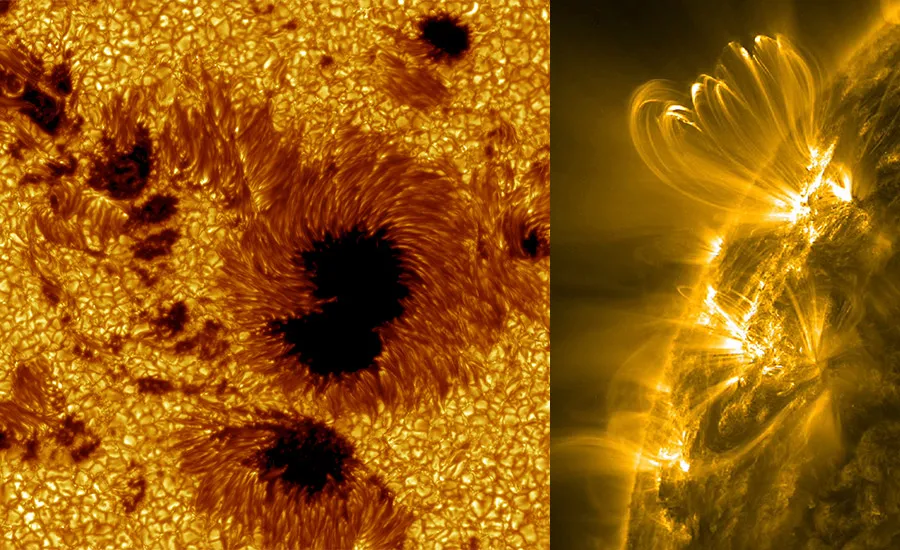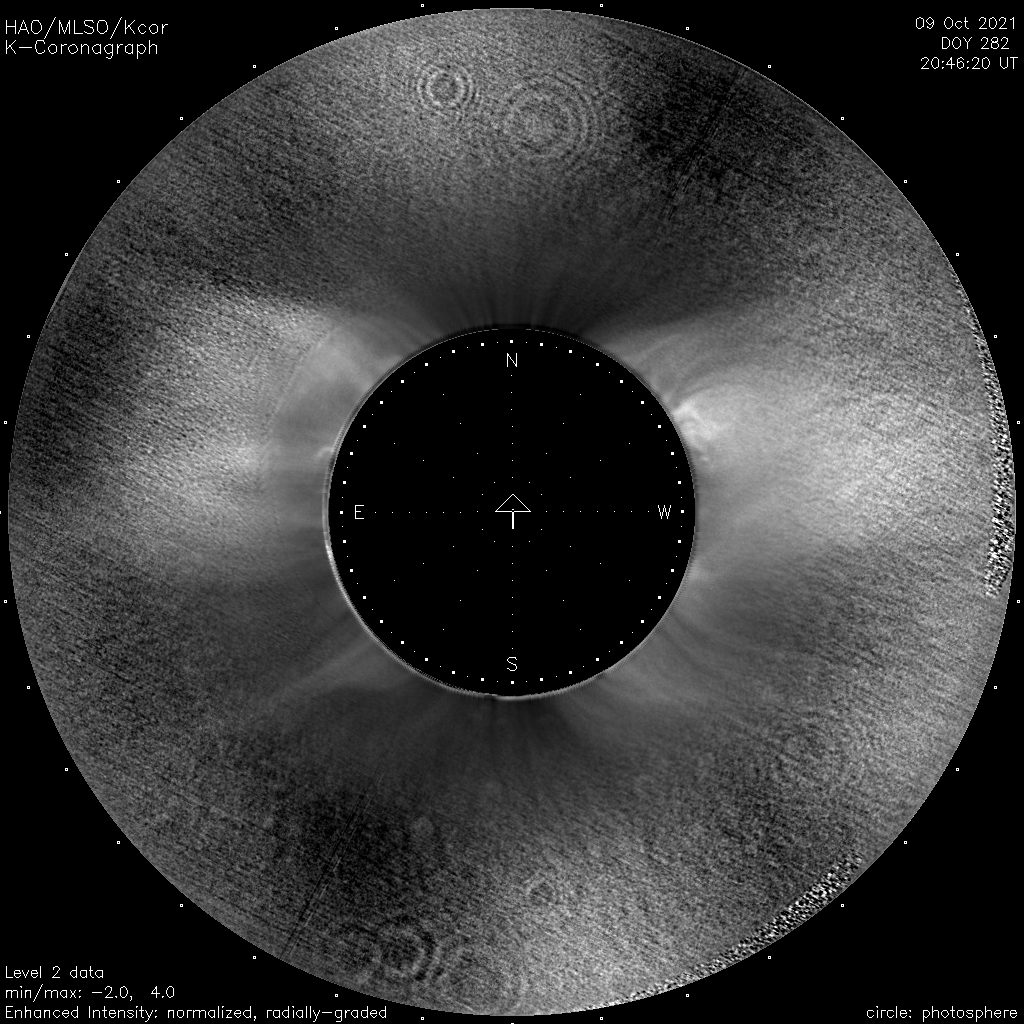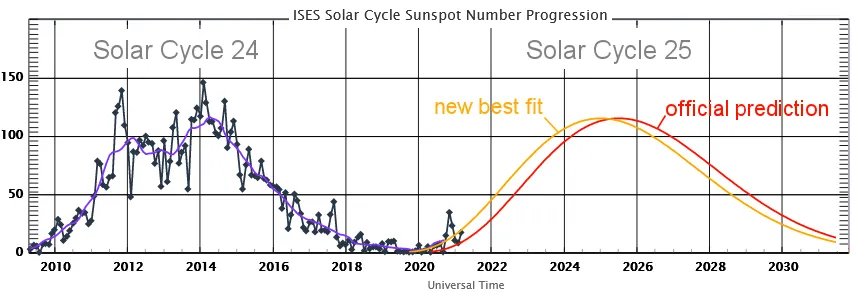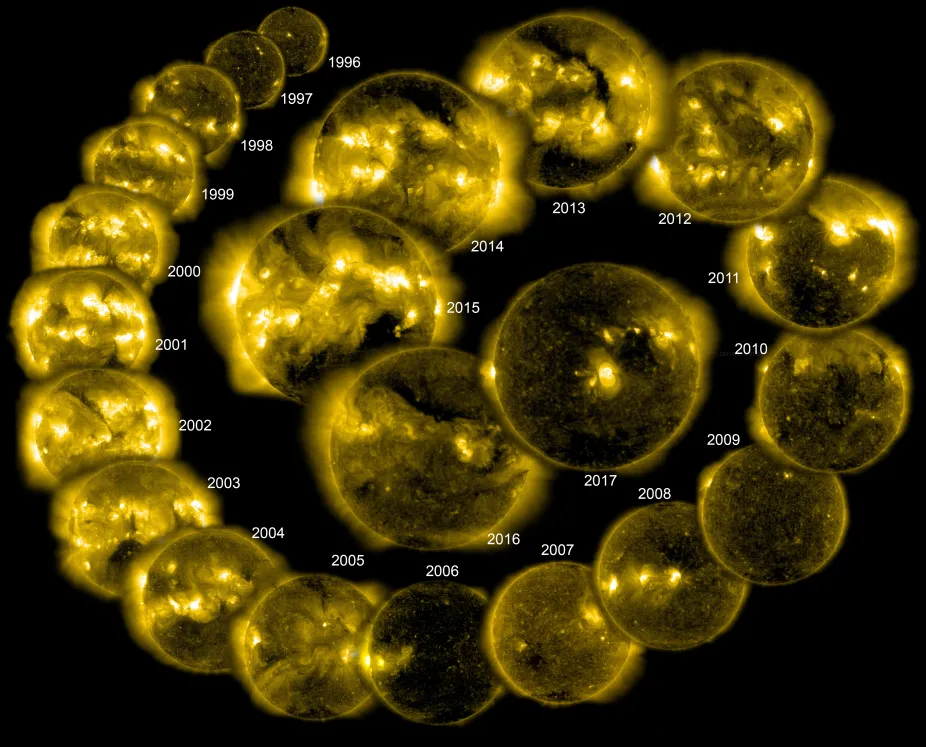The Active Sun
The Sun is an active place. The scorching, swirling plasma and chaotic magnetic fields within the Sun, at the solar surface, and in the solar atmosphere create many different types of solar phenomena. Some parts of the Sun are more active than others, and solar activity changes over time.

Two views of active regions of the Sun: a close-up of sunspots (left) and coronal loops in an ultraviolet image of the Sun's atmosphere (right).
Some Regions of the Sun Are More Active Than Others
An active region on the Sun is an area with an especially strong magnetic field, up to 1,000 times stronger than the average magnetic field of the Sun. Most solar storms — solar flares and coronal mass ejections (CME) — blast forth from these active regions. The powerful magnetic fields around active regions release intense bursts of energy, which often take the form of high-energy X-ray and ultraviolet photons.
Active regions are most common during the peak of the sunspot cycle when the Sun's magnetic field is more chaotic or disorganized. Sunspots are visual indicators of active regions, although not all active regions produce sunspots. Many types of dramatic solar features, including solar prominences and coronal loops, frequently appear around active regions.

A coronal mass ejection from the west (right) side of the Sun, recorded from NCAR's HAO Mauna Loa Solar Observatory in October 2021.
HAO/NCAR
Solar Activity Cycles Over Time
Solar activity cycles between a minimum and a maximum about every 11 years. When solar activity is at a maximum, strong magnetic fields cause numerous sunspots and more frequent solar storms. When solar activity is at a minimum, the Sun’s magnetic field weakens and there are few to no sunspots and fewer solar storms.
Through careful counting of sunspots, solar prediction scientists determined that a solar minimum (when there are the fewest number of sunspots) occurred in December 2019. This recent solar minimum marks the beginning of Solar Cycle 25 (the current 11-year sunspot cycle). NASA scientists determined that Solar Cycle 25 peaked in October 2024, reaching solar maximum a bit ahead of schedule. Solar activity increases leading up to the peak and then gradually decreases heading toward the next solar minimum, which should occur around 2036.

The red curve shows NOAA’s predicted sunspot counts for Solar Cycle 25, which began in 2019, while the orange curve shows the new best fit count, based on higher than expected levels of solar activity (as of 2021). The current solar cycle is predicted to peak sometime in 2025, or possibly earlier, if current trends continue
NOAA/SWPC
The 11-year sunspot cycle is considered to be part of a longer, 22-year solar cycle — there are two sunspot cycles, each with a solar maximum and minimum, within the 22-year solar cycle.
During this 22-year cycle, the orientation of magnetic fields in the Sun's northern and southern hemispheres reverse polarity — not once but twice! In terms of magnetic fields, a complete solar cycle occurs when the magnetic polarity returns back to the way it was at the start of the cycle, flipping about every 11 years.

The Solar and Heliospheric Observatory has been observing the Sun from space-based telescopes long enough to capture a full 22-year solar cycle. The darker images show when there is less solar activity, while the brighter images show when there is increased solar activity.
SOHO/ESA & NASA
Studying how solar activity changes throughout the entire cycle improves our understanding of how Earth is affected and improves our space-weather forecasting abilities. For several years even after Solar Cycle 25 passes its peak, Earth's atmosphere will likely experience increased geomagnetic storms and more frequent auroras in both the northern and southern hemispheres.